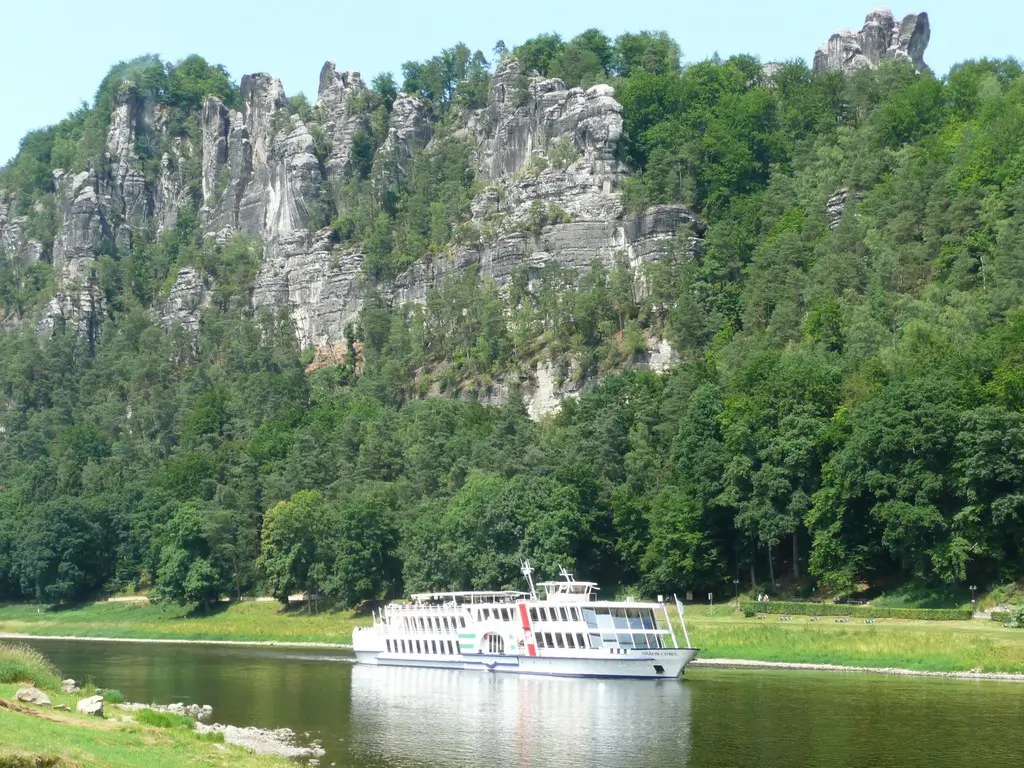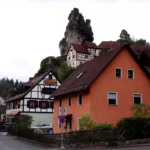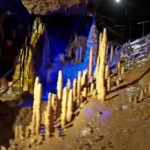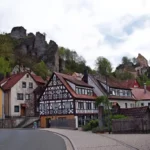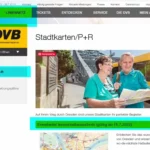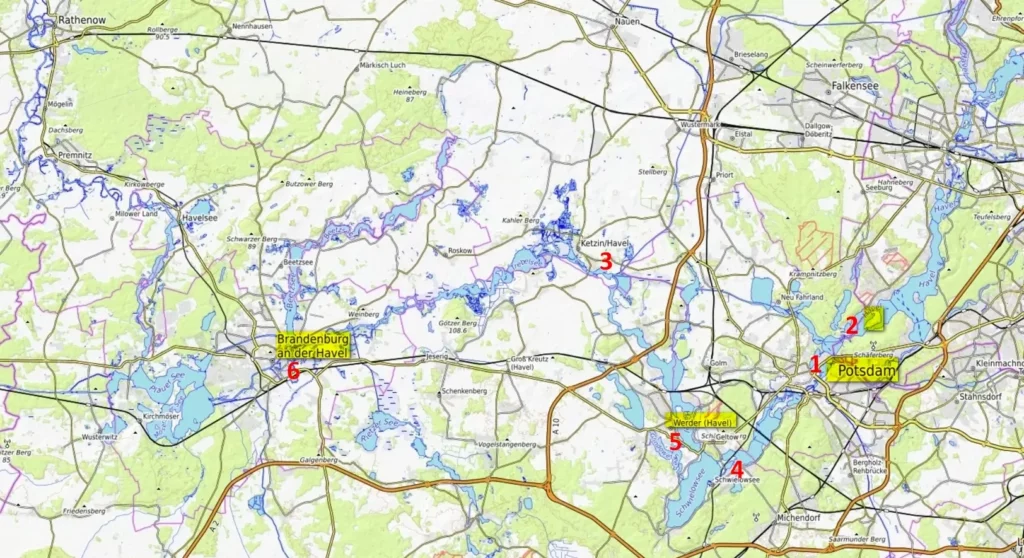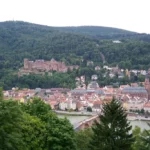Last Updated on 20/03/2023
Saxon Switzerland is for those who like to climb rocks, and for those who just like to walk in the mountains without performing the feats. What to see in Saxon Switzerland? The mountains are not too high, but the landscapes with rocks of different shapes are amazing. As a cultural program, there is a fortress and a number of castles, and Dresden with its museums is within easy reach. Over the past decade, the entertainment infrastructure along the Elbe has also grown. And if you then go further north, then mountain holidays can be combined with water holidays – there you will find the Upper Lusatian region with many lakes.
Attractions near Dresden. Bastei rocks, Königstein Fortress
Dresden attractions
Welcome cards and public transport in Dresden and surroundings
90+ parks and gardens in Germany on the map
Brandenburg What to see. 1
What to see in Brandenburg on the map. Part 2
The region immediately around Dresden, called Elbland, has been covered in the Attractions near Dresden. Bastei rocks, Königstein Fortress. It includes the Bastei rocks, the Königstein fortress in detail and the castles around Dresden briefly with a map. This area is circled in green on the map.
The points of interest discussed in this topic are highlighted in blue.
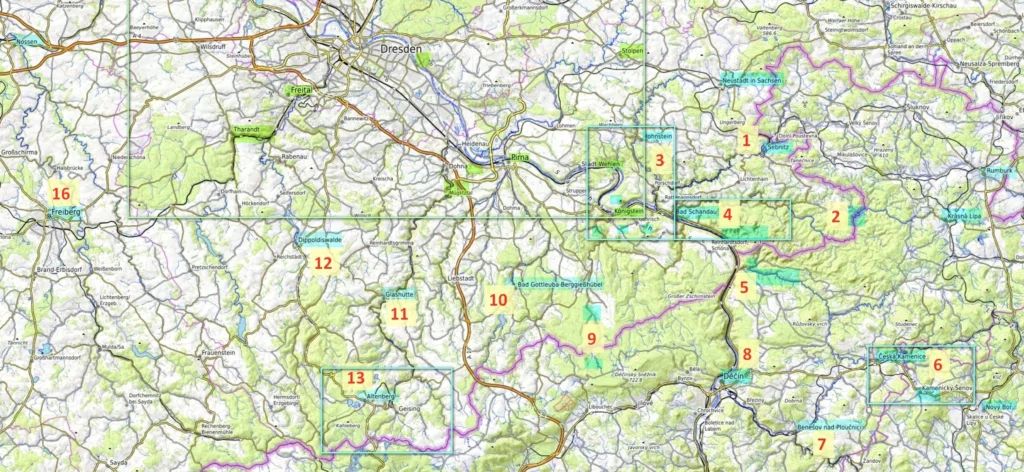
Everything important that you can see in the region – with notes and links.
- 1 – top
- 2 – very good, although not so well known
- 3 – good for a short vacation or a layover. Several medium-level interesting places
- 4 – local or specific, not for everyone
Marks without brackets – I was there (there are links to the posts). With brackets – I wasn’t there. Of course, the notes are subjective
Transport and routes in Saxon Switzerland. Links
The transport network of the region is Regionalverkehr Sächsische Schweiz-Osterzgebirge (Link).
The guest cards (Gästekarte) of the region, for those who stay here and pay the resort tax, provide free travel on public transport and discounts on attractions.
Special attention should be paid to special bus lines for tourists. – Link
Saxon Switzerland National Park website – Link. This link leads to the very valuable Download section, which has detailed routes, including whether they are suitable for children, dogs, and wheelchair users (with attention to each category!). To be honest, just a unique approach, rarely seen anywhere. There are also maps for climbers, but they are also suitable for ordinary hikers as a detailed description of the trails in the rocks.
What to see in Saxon Switzerland
(3-4)
1. Sebnitz and Neustadt in Sachsen
Neustadt – leisure pool Erlebnisbad Mariba.
Sebnitz is known for its traditional production of artificial flowers. You can visit the artificial flower factory (Schaumanufaktur Deutsche Kunstblume), the railway model factory museum, the indoor playground, the Hochseilgarten.
(3)
2. Hinterhermsdorf
This village is located in the middle of the national park, on the border with the Czech Republic, and belongs to Sebnitz.
You can get there by buses (for example, 241 from Bad Schandau).
Why go there? Mainly to see the Kirnitzsch Gorge at a place called the Obere Schleuse. Half a century ago, rafts were lowered along the river, simple dams were made in order to increase the amount of water for the passage of rafts at the right time. In a similar way, rafts were rafted in the Black Forest, which can be seen in the museum in Schiltach. Now they ride boats along the gorge along a narrow river with sheer rock walls a hundred meters high. Link
Schiltach in the Black Forest (Schwarzwald)
On the other side of the Czech border, the forest and rocks continue, but the tourist infrastructure is not as developed as in Saxony, so the region is more likely for those who live nearby or have already been to Saxon Switzerland many times.
Mentions deserve Loretokapelle in Rumburk (Link) and Krasna Lipa – preserved half-timbered houses and St.-Evangelista-Stolln mines.
Hidden in the forests closer to the German side is the Feenhöhle (Jeskyně víl) cave, which is of interest mainly in winter, when it is overgrown with ice stalactites and stalagmites.
2
3. From Hohnstein to Königstein
Bastei rocks and Königstein fortress already detailed in the previous post.
Attractions near Dresden. Bastei rocks, Königstein Fortress
But this is not all that you can see in this area. It’s just that these two top attractions are the most accessible and if you want to do your own “Saxon Switzerland in one day” tour from Dresden, they are the best for accessibility, also with public transport, – you will be able to impress and definitely want to return.
Brandaussicht
From the town of Hohnstein, a wheelchair-friendly path leads to the Brandaussicht lookout point with a view of Saxon Switzerland. You can also climb up the stairs in the rocks from the Brand bus stop and then walk one way to Hohnstein. Bus routes can be found at the link above.
Hohnstein
Hohnstein itself is located on a hill, so its old town and castle look especially picturesque. The castle has a small exhibition and observation tower, but is mainly an event venue and a hotel. There are several no less picturesque points:
Ritterstein rocks overlooking the city,
narrow passage-gorge in the Wolfschlucht rocks
cave Gautschhöhle
and a romantic wild gorge rising towards the city – Schindergraben.
Hohnstein – the place where the German puppet theater Kasperle was born (processing the German street theater tradition into plays for children).
Lilienstein
Opposite the Königstein fortress, across the Elbe, the rock-mountain Lilienstein rises separately in an open field. It is visible from afar and you can climb it.
To do this, we get to the Königstein stop by train, cross by ferry and follow the signs.
Equipped stairs lead upstairs, at the top there are fenced viewing platforms and a stele. From the photographs, the climb itself looks great, but I prefer the views to Lilienstein, and not from there, at least from the photographs. Roughly the same story as with the Eiffel Tower.

Also south of Königstein are three places for walking in the rocks:
Pfaffenstein,
the rock labyrinth Felsenlabyrinth
and the rocks at Gohrisch.

(2)
4. Bad Schandau
This is the most known city in Saxon Switzerland, one might say the capital. Here is the information center of the national park.
Spa town, Kurpark, botanical garden. Thermal pool
Ruins of Schomburg castle.
The historic railway (tram) Kirnitzschtalbahn goes deep into the mountains for 8 km to the Lichtenhainer Wasserfall waterfall, from where you can go to the picturesque rock in the form of the powerful gate – Felsentor Kuhstall.
There are also many beautiful rocks around. Further along the gorge towards the Czech Republic there is bus 241 (see point 2 why go there).
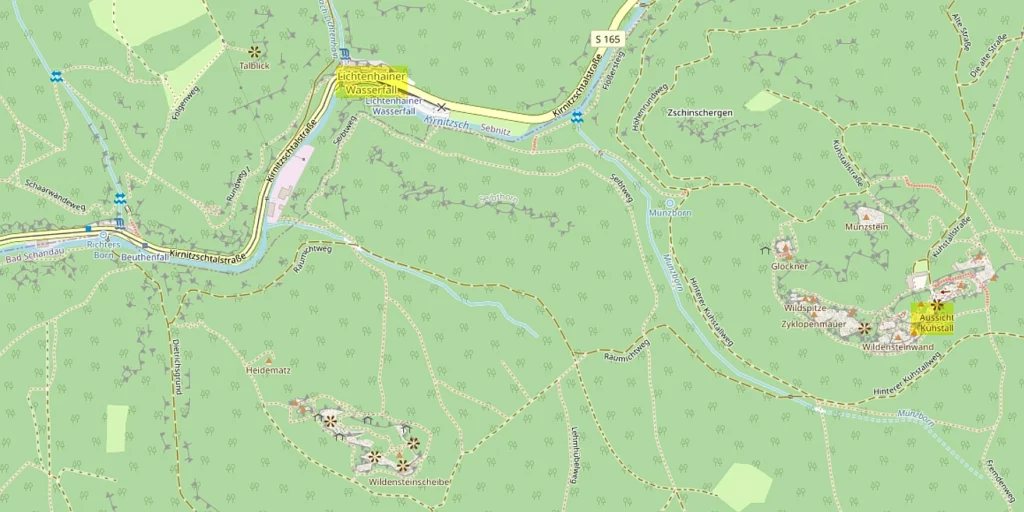
The part of the city called Ostrau, which can be reached by a 1904 elevator, can be used as a starting point for walks. In this area you can see the wooden villas of the architect Sendig, the lynx paddock.
One of the walking trails goes over the Elbe.
There are also many rocks near Bad Schandau itself.
The most interesting are Schrammsteine and Affensteine. They can be approached from Bad Schandau, Schmilka (ferry) or the Nasser Grund (Kirnitzschtalbahn) stop. Don’t forget to download detailed rock maps, not all of them are suitable for walking with children or for inexperienced hikers.
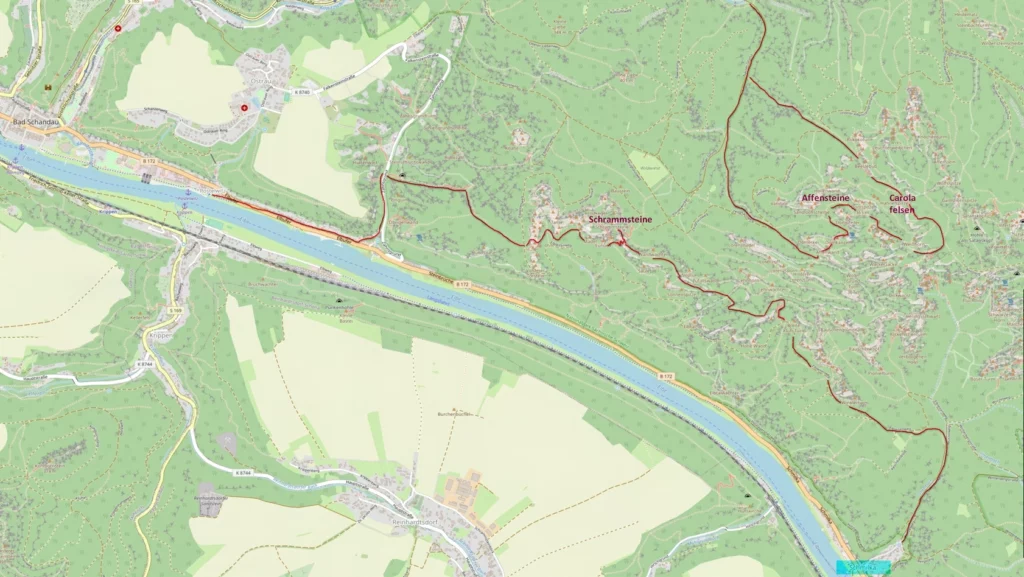
(2-3)
5. Hrensko
Train to Schöna and ferry or bus from the other side of the river.
This small village has two top attractions at once: Prebischtor and the gorge of the Kamnitz river.
Prebischtor (Pravcicka Braha) – a rock in the form of a huge gate or rather a triumphal arch with a thin crossbar on top, which is definitely worth a visit. The five-kilometer route to the cliff can be shortened by taking a bus.
The gorge is completely called Kamnitzklamm (Kamenice) – a hiking trail has been laid here. Two sections of the river are available for boating: Edmundsklamm and Wilde Klamm. The walls of the gorge are not as high as the Obere Schleuse, but this does not make the gorge less picturesque, and getting here is much easier.
(3)
6. Ceska Kamenice, Kamenicky Senov
Ceska Kamenice – the old town, the gothic church Jakobuskirche, where Dvořák played the organ, the baroque pilgrimage church Mariä Geburt, a couple of castle ruins and cliffs with viewing platforms in the vicinity.
Kamenicky Senov
– the Glasmuseum (obviously, we are talking about the famous Bohemian glass),
– the original rock Herrnhausfelsen (Panska Skala), consisting of thin vertical basalt pipes.
The Bohemian glass region goes further east: you can visit
museum in Novy Bor,
glass factory Lasvit Ajeto in Lindava,
glas museum Jablonec nad Nisou
(3-4)
7. Benesov nad Ploučnicí
The main attraction of this city is a well-preserved complex of two castles and a church. The construction of castles began in 1515, they were built in the late Gothic and Renaissance styles. Interiors can be viewed on the website. Link
(4)
8. Decin
Castle on a hill above the river. The history of the castle began in the 10th century, it was rebuilt several times. The history of the 20th century for the castle was not very successful – it had barracks, three armies passed through it (it is clear how much after is remained). Since 1991 the castle has been restored.
Zoo, water park.
(3)
9. Tyssauere Wände, Ostrov, Herkulessäulen, Bielatal
A less visited part of Saxon Switzerland as it is away from the railway.
Walking from north along the gorge along the Biela River, you will see the Herkulessäulen pillar rocks of various shapes.
Immediately after crossing the Czech border, the tourist gets to the place Ostrov (refers to the Gemeinde Tisa). Here the river takes its source and there are a couple of small lakes. Here are another rocks from the top 10 series – Tyssauer Wände (Ticke Steny).
(4)
10. Bad Gottleuba-Berggießhübel
Here Saxon Switzerland ends and you will no longer see the rocks. However, nothing else is interesting enough for non-local travelers either.
Berggießhübel – mine Besucherbergwerk Marie Louise Stolln Link
Borna – lime kiln Kalkofen Link
Liebstadt – Kuckuckstein Castle has an interesting name (cuckoo stone), but you can only see it from the outside if you don’t want to hold an event there.
What to see in Eastern Ore Mountains (Osterzgebirge)
(3-4)
11. Glashütte
Clock Museum, 10 watch manufactories.
Reinhardtsgrimma – mushroom museum (Link), small baroque palace (concerts)
(4)
12. Dippoldiswalde
Museum of Medieval Mining MiBerz
Reservoir Malter – strands. Erlebnisbad Paulsdorf
(3-4)
13. Altenberg and around
Bergbaumuseum (Link), mine Besucherbergwerk Zinnwald (Link)
Mountain with entertainment: summer toboggan, go-karts, monster roller, climbing frames, springboard, etc.
Wildpark Osterzgebirge. Castle Lauenstein – Museum of the Eastern Ore Mountains
Botanical Garden Schellerhau. Bobsleigh track
Path through the swamps Georgenfelder Hochmoor
Teplice in the Czech Republic – leasure pool Erlebnisbad, spa, mineral springs, botanical garden with greenhouses
Krupka – mine Stolln Starý Martin (Link)
Steam train from Freital to Kurort Kipsdorf – Weißeritztalbahn (Link)
(3)
14. Kurort Seiffen and around
Center of traditional wooden toys of the Ore Mountains. About 50 productions, you can see and even participate. Toy Museum. Open-air museum.
Summer toboggan. Model railroad
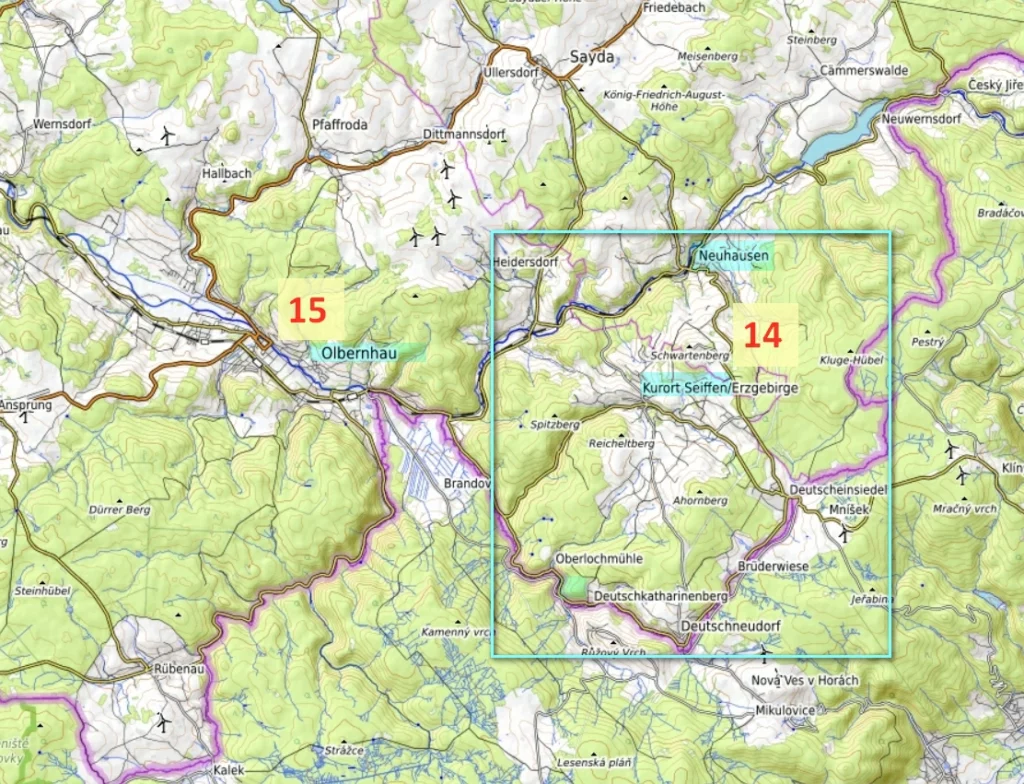
Mine Abenteuer Bergwerk
Neuhausen – glassblowing workshop Glashütte, chair-making museum, nutcracker museum.
(4)
15. Olberhau
Denkmalkomplex Saigerhütte Olbernhau-Grünthal is a museum complex associated with copper production. Link
Museum of the city with a museum for children, a model railway.
(3)
16. Freiberg
Medieval Freiberg was the center of the development of the silver mining industry. The sights of the city are mainly associated with this period. The Reiche Zeiche mine, located one kilometer from the city center, can be visited. Link
In the former Freudenstein Palace there is a large exhibition of minerals Terra mineralia (about 3500 minerals). Near the museum of the city and mining. Link
Freiberg has preserved the medieval city center.
The cathedral belongs to the 12th century. The main value is the golden gate (portal with figures in the Romanesque style).
Petrikirche – church of the turn of the 12th-13th centuries. You can climb the tower overlooking the city center.
Pool Johannisbad. Small free zoo Tierpark
Kleinvoigtsberg– mine Alte-Hoffnung-Gottes-Erbstollen Link
Nossen – castle (rebuilt in the 16th century, museum of the region), monastery ruins
More topics about #Saxony
Do you enjoy the site without cookies? This means that I work for you at my own expense.
Perhaps you would like to support my work here.
Or change your cookie settings here. I don’t use personalized ads

